This article was co-authored by Joshua Grahlman, PT, DPT, FAFS. Dr. Joshua Grahlman, PT, DPT, FAFS, is the Founder and Chief Athlete Mechanic of Clutch PT + Performance, a private physical therapy clinic specializing in sports and orthopedics in New York City. With more than a decade of experience, Dr. Grahlman specializes in treating acute and chronic pain and injuries, sports performance optimization and post-operative rehabilitation. Dr. Grahlman earned his Doctorate of Physical Therapy (DPT) from Columbia University College of Physicians and Surgeons. He is one of just a few DPTs in New York City recognized as a Fellow in Applied Functional Science through the Gray Institute for Functional Transformation (GIFT). He is certified in Active Release Technique and Spinal Manipulation and is a TRX Suspension Training Specialist. Dr. Grahlman has spent his career treating athletes of all levels, from Ironman Champions and Olympians to marathoner moms. He consults for Triathlete, Men’s Health, My Fitness Pal and CBS News.
There are 10 references cited in this article, which can be found at the bottom of the page.
This article has been viewed 35,629 times.
Tennis elbow is a commonly-used term for pain in the tendons at the back of the elbow and is often caused by repetitive strain. Although the condition can be painful, it’s usually not too serious and is easily treatable.[1] Fortunately, tennis elbow may get better on its own as long as you don’t do anything to worsen the injury. Taking pain medication and massaging the elbow also helps. Always check with a doctor when you first feel pain to check if you have a sprain or have torn the tendon, which requires surgery to repair.
Steps
Resting Your Injured Elbow
-
1Stop doing the activity that caused your tennis elbow. Although tennis elbow can be caused by playing tennis, the full range of potential causes is far larger. Any physical activity you perform that involves repetitive motions with your elbow can cause tennis elbow. It’s important that you stop doing this activity so your elbow heals. Non-tennis-related activities that can cause tennis elbow include:[2]
- Lifting or carrying heavy loads
- Daily computer and keyboard usage
- Sports like basketball or hockey
- Plumbing, gardening, or painting[3]
-
2Modify repetitive actions if you cannot stop performing them. Tennis elbow is often caused by a repetitive motion involving rotation in your wrist and shoulder.[4] In some instances, your tennis elbow may have been caused by an action that’s part of your job or your daily life. If that’s the case, look for ways to modify the activity and cut down on the amount of strain you put on your elbow.[5]
- For example, if you work in construction, your job may depend on you being able to carry heavy bags of cement. Try to modify the activity by having someone else help you carry bags or using a wheelbarrow to lug them around.
Advertisement -
3Rest your elbow for at least 1 week. It’s crucial that you give the damaged tendons time to recover and heal themselves. Do this by avoiding any activities that strain your elbow. Try not to lift anything heavy with your injured arm. If you can, minimize your computer and keyboard usage. Also try to find ways to physically rest your arm as you go about your day, so you don’t put unnecessary strain on the tendons in your elbow.[6]
- For example, if you're sitting on a sofa or in an armchair, keep the elbow elevated on the arm of the chair. Or, if that's not comfortable, try propping up the elbow with 2-3 pillows when sitting in an armchair.
Reducing Pain from Tennis Elbow
-
1Wear a forearm brace to cut back on elbow pain. Putting a tight brace around the center of your forearm can take pressure off of the tendons in the sore elbow and the muscles that move your arm. This, in turn, will decrease the amount of pain you feel from the damaged tendons. When you put the brace on your arm, cinch it tight about 2 inches (5.1 cm) below your elbow.[7]
- Purchase a forearm or elbow brace at any large pharmacy or drug store. They’re usually inexpensive and should cost less than $10USD.
- Ask a physiotherapist or partner to help you put on your brace to make sure it’s the right size.
-
2Massage the painful points on your elbow with your other hand. Pinpoint the most tender or painful spot on your elbow. Use 3-4 fingers on your other hand to massage the tender spot with long, firm strokes. Exert moderate pressure, but not enough to worsen the pain. Massage from well below to well above that spot. Do this 1-2 times a day.[8]
- You will find that the pain extends to the areas surrounding the elbow, so massage any areas that feel pain.
- Use a small amount of natural massage oil to help ease the pain.
-
3Ice your elbow for 15 minutes at a time. Hold a frozen gal pack or any other kind of ice pack directly against your painful elbow for 15 minutes. Do this 3–4 times per day, and space the ice applications out by at least 4–5 hours. Ice will help to reduce the tendon (and muscle) inflammation and will also cut back on the amount of pain you’re feeling. The cold temperatures may also reduce inflammation in the damaged tissue.[9]
- You can purchase a gel-filled ice pack at any pharmacy or supermarket.
- If you don’t have an ice pack handy, try holding a bag of frozen peas or frozen corn against the elbow.
-
4Take NSAIDs to stop the pain and reduce elbow swelling. NSAIDs—non-steroidal anti-inflammatory medications—include ibuprofen, naproxen (found in drugs like Aleve), and diclofenac (found in Cambia and Cataflam). These medications will have 2 effects: they’ll stop (or reduce) your elbow pain and decrease the swelling in your damaged tendons.[10]
- Always follow the directions printed on the side of the NSAID packaging. Do not exceed the daily recommended dosage.
-
5Apply a topical NSAID cream to the elbow for a more specific treatment. Not all NSAIDs are taken orally. Drug companies also make topical creams that can be purchased over the counter at your local drugstore or pharmacy. Rub a topical cream directly onto the elbow that has tennis elbow. The cream will decrease pain and swelling, just like the oral NSAIDs.[11]
- Follow the directions on the tube of NSAID cream closely. Do not use more cream than directed and apply the cream only as often as the packaging suggests.
Promoting Healing with Therapy and Stretches
-
1Practice physical therapy to strengthen and heal your damaged elbow. Physical therapy geared towards strengthening the muscles in your afflicted elbow can help in reducing the symptoms associated with tennis elbow. So, ask your general practitioner if they can refer you to a therapist for help with your tennis elbow. The physical therapist will ask you to perform various exercises that involve eccentric contractions with your damaged elbow.[12]
- You need to exercise your tendons so they heal appropriately because your body won't know how to heal itself unless you give it input on how to place the new fibers of your tendon through exercise.[13]
- Eccentric contractions occur when you tense an elbow by lengthening it (e.g., when you straighten your arm).
-
2Do a simple exercise with 2 to 5 pounds (0.91 to 2.27 kg) dumbbells. Put your arm on a table to give yourself support, fully extending your arm so your palm is facing the ground. Then, take the weight and bring your wrist up. If you feel pain in the elbow area, you're exercising the correct tendon.[14]
- Do the wrist movement in sets of 20, with 3 sets in the morning and 3 at night.[15]
- As that gets easier, increase the number of repetitions rather than the weight. This teaches the tendon to heal itself.
-
3Stretch your wrist to maintain its flexibility. Gently rotate your hand that’s on the arm with a painful elbow. Pull the hand backward and forwards to stretch out the tendons connecting to the elbow. Also try rotating your wrist in a circular motion 5–6 times.[16] Stretching your wrist will also increase blood flow to the area, which should encourage the painful tendons to heal themselves.
- If you feel an increased amount of pain at any time while you’re stretching, stop immediately.
- Try doing forearm stretches, as well. Extend your arms with your fingertips pointing away from you, then bend your wrists to 90°. Then, turn your palms around so your fingertips are pointing backwards toward your knees, and do the same thing.[17]
-
4Use a rowing machine after you’ve healed to stretch and strengthen your elbow. Rowing machines allow you to pull your body weight back and forth with both arms. This stretched and strengthens the muscles attached to your elbows. Stimulating these muscles can help prevent further damage to your tendons and help build strength.[18] Rowing machines are available at most gyms.
- Talk with your doctor or physical therapist before using a rowing machine. Ask them to show you how to use proper form when you row. If you use improper form, you may damage your elbow further.
Receiving Medical Treatments
-
1Visit your doctor if your elbow still hurts after trying other methods. In cases of severe tennis elbow, simply resting the elbow and treating pain with OTC medications may not be enough to encourage the damaged tendons to heal themselves. If your tennis elbow persists for more than 1–2 days, schedule an appointment with your doctor.
- Also see your doctor if the pain in your elbow becomes extreme or no longer responds to ice and NSAIDs.
-
2Receive steroid injections around your damaged tendons, if recommended. If you have tried a few methods of decreasing elbow pain and they haven’t been effective ask your doctor about steroid injections. Doctors commonly inject corticosteroids into painful tendons or muscles that need to regenerate tissue. If the initial treatment works, your doctor may recommend follow-up injections for a few weeks.[19]
- The doctor administering the steroid injection will first inject a local anesthetic so you don’t feel the multiple injections in your painful tendon.
-
3Ask your doctor about PRP injections to your damaged tendon. Treating tennis elbow with PRP—platelet rich plasma—is a relatively new method but it’s largely effective. You’ll need to visit your doctor or a surgeon and give a blood sample to begin the procedure. The surgeon will use a machine to remove the platelets from your blood sample and then re-inject those platelets back into your damaged elbow tendon.[20]
- Platelets can heal damaged tissue and should greatly speed up the healing process in your damaged tendons.
- The whole procedure should take only about 15 minutes. You may feel mild discomfort during the injection.
- Check with your insurance provider to see if this type of procedure is covered for you.
-
4Try shockwave therapy for a noninvasive option. If you—or your doctor—would rather not use injections to treat your tennis elbow, ask them about shockwave therapy. When you receive shockwave therapy, the doctor will use an electrical device to pass high-energy shockwaves into your damaged elbow. This will stop the pain that you’re feeling and will also encourage the damaged tendons to heal.[21]
- Since shockwave therapy can be a little uncomfortable, the doctor may give you a local anesthetic first.
- If you have severe pain or serious tendon damage, you may need to return for multiple sessions of shockwave therapy.
-
5Consider surgery if other treatments don’t improve your tennis elbow. Surgery is regarded as the last option for tennis elbow, but may be appropriate if the condition has gone on for months without improving. To decrease the pain you feel from the damaged or torn tendons, a doctor will shorten or repair the tendons. This will take several months to heal.[22]
- Your general practitioner will most likely refer you to a surgeon for this procedure.
Expert Q&A
-
QuestionHow do you heal tennis elbow fast?
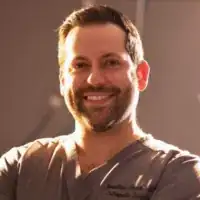 Jonathan Frank, MDDr. Jonathan Frank is an Orthopedic Surgeon based in Beverly Hills, California, specializing in sports medicine and joint preservation. Dr. Frank's practice focuses on minimally invasive, arthroscopic surgery of the knee, shoulder, hip, and elbow. Dr. Frank holds an MD from the University of California, Los Angeles School of Medicine. He completed an orthopedic residency at Rush University Medical Center in Chicago and a fellowship in Orthopedic Sports Medicine and Hip Preservation at the Steadman Clinic in Vail, Colorado. He is a staff team physician for the US Ski and Snowboard Team. Dr. Frank is currently a scientific reviewer for top peer-reviewed scientific journals, and his research has been presented at regional, national, and international orthopedic conferences, winning several awards including the prestigious Mark Coventry and William A Grana awards.
Jonathan Frank, MDDr. Jonathan Frank is an Orthopedic Surgeon based in Beverly Hills, California, specializing in sports medicine and joint preservation. Dr. Frank's practice focuses on minimally invasive, arthroscopic surgery of the knee, shoulder, hip, and elbow. Dr. Frank holds an MD from the University of California, Los Angeles School of Medicine. He completed an orthopedic residency at Rush University Medical Center in Chicago and a fellowship in Orthopedic Sports Medicine and Hip Preservation at the Steadman Clinic in Vail, Colorado. He is a staff team physician for the US Ski and Snowboard Team. Dr. Frank is currently a scientific reviewer for top peer-reviewed scientific journals, and his research has been presented at regional, national, and international orthopedic conferences, winning several awards including the prestigious Mark Coventry and William A Grana awards.
Sports Orthopedic Surgeon & Joint Preservation Specialist Tennis elbow is easy to treat but it does take a while to get better. Be religious about exercising the injured tendon regularly but appropriately, so it receives environmental input on how to heal itself.
Tennis elbow is easy to treat but it does take a while to get better. Be religious about exercising the injured tendon regularly but appropriately, so it receives environmental input on how to heal itself. -
QuestionWhat is the best treatment for tennis elbow?
 Joshua Grahlman, PT, DPT, FAFSDr. Joshua Grahlman, PT, DPT, FAFS, is the Founder and Chief Athlete Mechanic of Clutch PT + Performance, a private physical therapy clinic specializing in sports and orthopedics in New York City. With more than a decade of experience, Dr. Grahlman specializes in treating acute and chronic pain and injuries, sports performance optimization and post-operative rehabilitation. Dr. Grahlman earned his Doctorate of Physical Therapy (DPT) from Columbia University College of Physicians and Surgeons. He is one of just a few DPTs in New York City recognized as a Fellow in Applied Functional Science through the Gray Institute for Functional Transformation (GIFT). He is certified in Active Release Technique and Spinal Manipulation and is a TRX Suspension Training Specialist. Dr. Grahlman has spent his career treating athletes of all levels, from Ironman Champions and Olympians to marathoner moms. He consults for Triathlete, Men’s Health, My Fitness Pal and CBS News.
Joshua Grahlman, PT, DPT, FAFSDr. Joshua Grahlman, PT, DPT, FAFS, is the Founder and Chief Athlete Mechanic of Clutch PT + Performance, a private physical therapy clinic specializing in sports and orthopedics in New York City. With more than a decade of experience, Dr. Grahlman specializes in treating acute and chronic pain and injuries, sports performance optimization and post-operative rehabilitation. Dr. Grahlman earned his Doctorate of Physical Therapy (DPT) from Columbia University College of Physicians and Surgeons. He is one of just a few DPTs in New York City recognized as a Fellow in Applied Functional Science through the Gray Institute for Functional Transformation (GIFT). He is certified in Active Release Technique and Spinal Manipulation and is a TRX Suspension Training Specialist. Dr. Grahlman has spent his career treating athletes of all levels, from Ironman Champions and Olympians to marathoner moms. He consults for Triathlete, Men’s Health, My Fitness Pal and CBS News.
Physical Therapist & Entrepreneur Do forearm stretches to help improve your range of motion. Hold your arms out with your fingertips pointing away from your with your palms down, then bend your wrist so your fingers are pointing down at the floor. Then, flip your hands over and bend your wrists downward again.
Do forearm stretches to help improve your range of motion. Hold your arms out with your fingertips pointing away from your with your palms down, then bend your wrist so your fingers are pointing down at the floor. Then, flip your hands over and bend your wrists downward again.
Warnings
- If you have any allergies to medications, check the ingredients in any medicated creams to make sure you won't have an allergic reaction.⧼thumbs_response⧽
- Some people have different levels of pain tolerance. Even if you’re feeling a minor pain in your elbow, get it checked to make sure it’s not torn.⧼thumbs_response⧽
References
- ↑ Jonathan Frank, MD. Sports Orthopedic Surgeon & Joint Preservation Specialist. Expert Interview. 31 July 2020.
- ↑ https://www.nhs.uk/conditions/tennis-elbow/treatment/
- ↑ https://well.blogs.nytimes.com/2009/08/25/phys-ed-an-easy-fix-for-tennis-elbow/
- ↑ Joshua Grahlman, PT, DPT, FAFS. Physical Therapist & Entrepreneur. Expert Interview. 8 September 2020.
- ↑ https://www.nhs.uk/conditions/tennis-elbow/treatment/
- ↑ https://www.painscience.com/articles/tennis-elbow.php
- ↑ https://orthoinfo.aaos.org/en/diseases--conditions/tennis-elbow-lateral-epicondylitis/
- ↑ https://www.painscience.com/articles/tennis-elbow.php
- ↑ https://www.mayoclinic.org/diseases-conditions/tennis-elbow/diagnosis-treatment/drc-20351991
- ↑ https://orthoinfo.aaos.org/en/diseases--conditions/tennis-elbow-lateral-epicondylitis/
- ↑ https://www.nhs.uk/conditions/tennis-elbow/treatment/
- ↑ https://orthoinfo.aaos.org/globalassets/pdfs/a00790_therapeutic-exercise-program-for-epicondylitis_final.pdf
- ↑ Jonathan Frank, MD. Sports Orthopedic Surgeon & Joint Preservation Specialist. Expert Interview. 31 July 2020.
- ↑ Jonathan Frank, MD. Sports Orthopedic Surgeon & Joint Preservation Specialist. Expert Interview. 31 July 2020.
- ↑ Jonathan Frank, MD. Sports Orthopedic Surgeon & Joint Preservation Specialist. Expert Interview. 31 July 2020.
- ↑ https://myhealth.alberta.ca/Health/Pages/conditions.aspx?hwid=hw225132
- ↑ Joshua Grahlman, PT, DPT, FAFS. Physical Therapist & Entrepreneur. Expert Interview. 8 September 2020.
- ↑ https://www.uofmhealth.org/health-library/hw225132
- ↑ https://www.nhs.uk/conditions/tennis-elbow/treatment/
- ↑ https://www.nhs.uk/conditions/tennis-elbow/treatment/
- ↑ https://www.nhs.uk/conditions/tennis-elbow/treatment/
- ↑ https://www.nhs.uk/conditions/tennis-elbow/treatment/
About This Article
To heal tennis elbow, which is a painful condition caused by repetitive strain, stop any activities that put strain on your elbow for at least a week. For example, avoid lifting heavy loads, playing sports, or using computer keyboards. If you can’t stop an activity completely, try to modify it to reduce strain. For instance, if you need to carry heavy bags around, ask someone to help you or use a wheelbarrow. To reduce the pain of tennis elbow, buy a forearm brace from a drug store, which will take the pressure off your tendons and muscles. Take over-the-counter painkillers, like ibuprofen and naproxen, if you need to. If your pain persists for more than a couple of days after resting your elbow and using a brace, visit your doctor for treatment. For more tips from our Medical co-author, including how to heal and strengthen your elbow with stretches, read on!
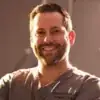
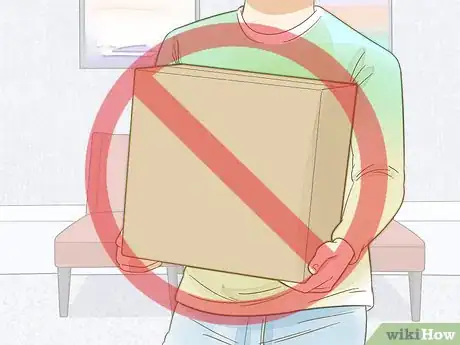
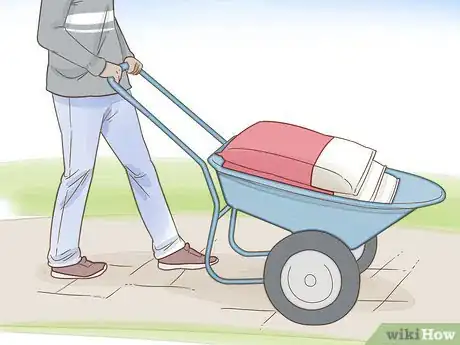

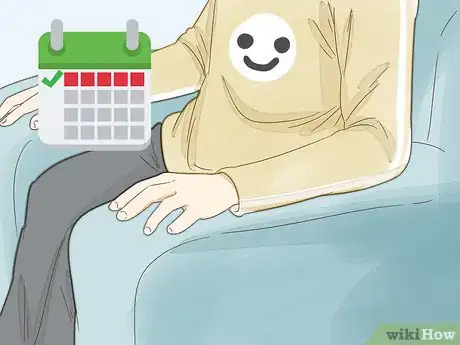

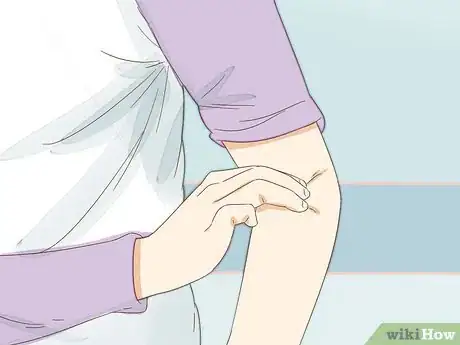
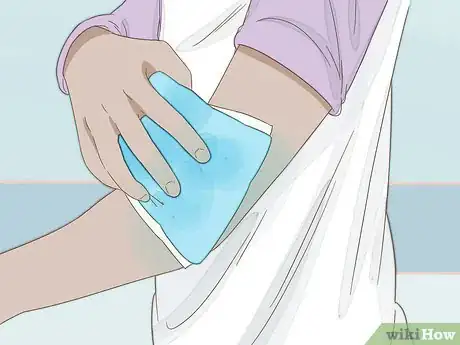
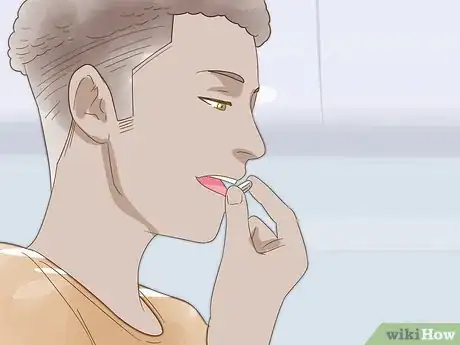
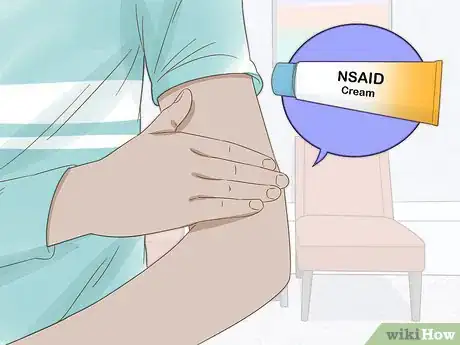
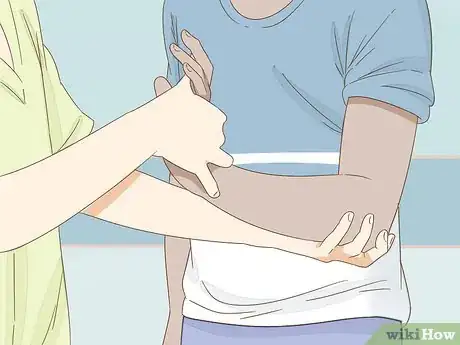
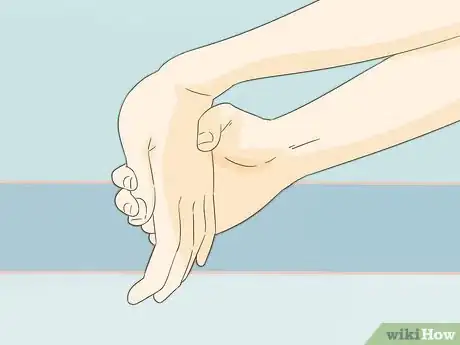

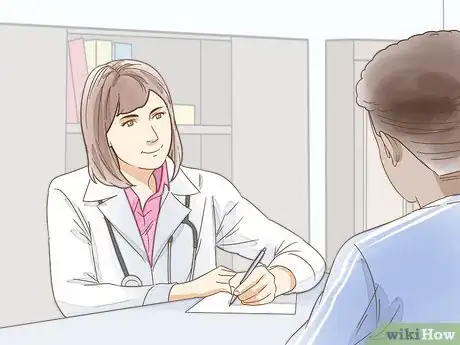
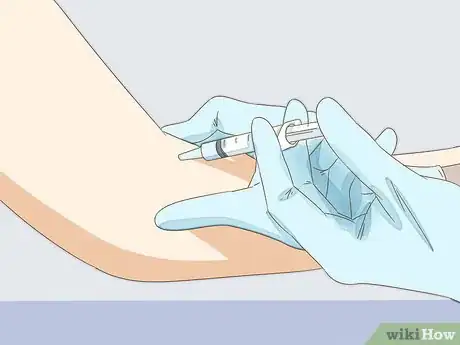

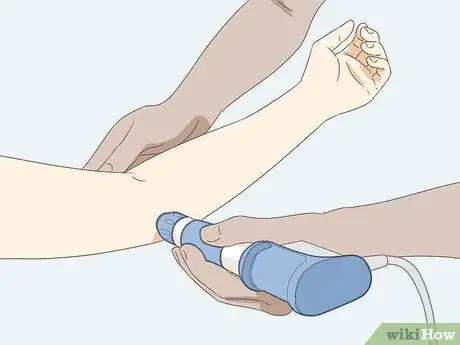
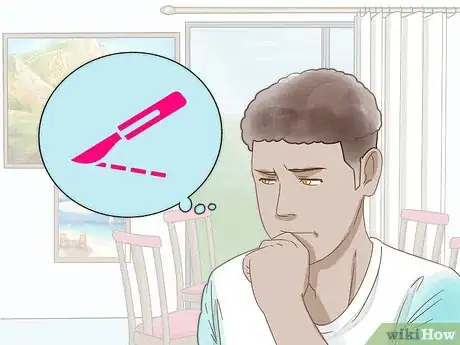

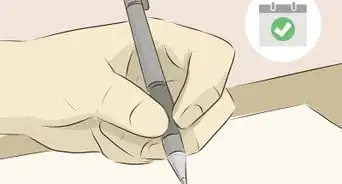
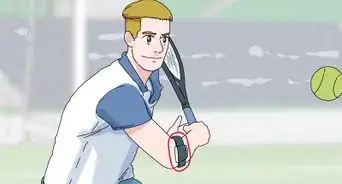
-Step-15-Version-3.webp)

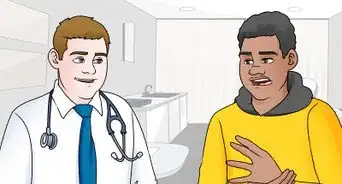

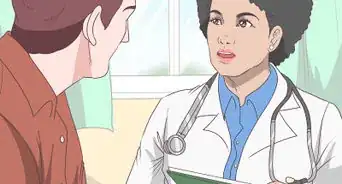





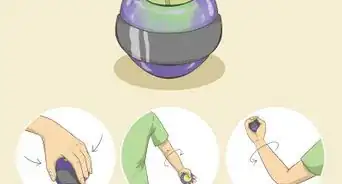







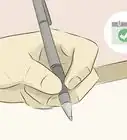
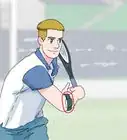
-Step-15-Version-3.webp)



































Medical Disclaimer
The content of this article is not intended to be a substitute for professional medical advice, examination, diagnosis, or treatment. You should always contact your doctor or other qualified healthcare professional before starting, changing, or stopping any kind of health treatment.
Read More...